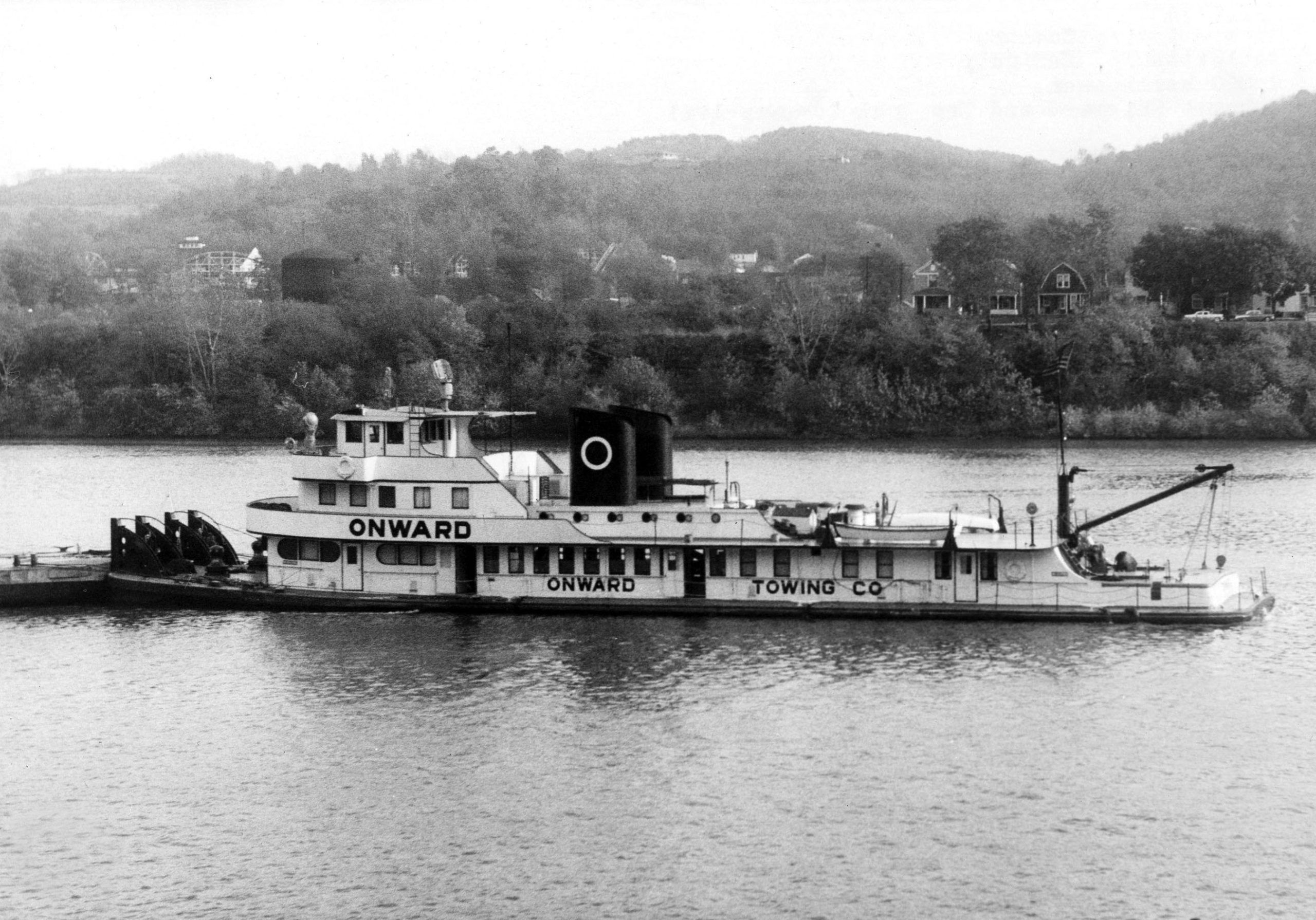Ashland Oil & Refining Company (AO&R) was founded in 1924 as a subsidiary of the Swiss Oil Company called Ashland Refining. Paul G. Blazer was placed in charge of the company, and within a few years the child had swallowed the parent. After owning three small sternwheel towboats, AO&R had the fledgling St. Louis Shipbuilding & Steel Company build a new 360 hp. diesel twin-screw boat named Senator Combs (see The Waterways Journal, October 10, 2022). In 1940, AO&R took delivery of the 1,160 hp. Jim Martin (WJ, April 29, 2024) from Calumet Shipyard and Drydock Company of Chicago.
The Martin was the first of several boats and barges that Calumet built for AO&R. The growing oil company soon planned a trio of even larger boats from Calumet. A.M. Deering of Chicago, designer of the Martin, designed the three larger boats, and while their lines were somewhat similar to the Jim Martin, they were distinctly different. This column has covered the first of the “Big Three,” the Ashland, which came out in May 1941. The last of the series, the Tri-State, was delivered in April 1942 (see WJ, February 20, 2023). This week’s column will look at the second of these three boats, completed in December 1941.
The second boat in the series was named the Paul Blazer after the head of AO&R. Like the Ashland, it was all steel with a hull that measured 145 feet by 31 feet. While the first boat was powered by a pair of Fairbanks-Morse Model 37E seven-cylinder, direct-drive diesels that produced 1,610 hp., the Blazer was fitted with two National Superior eight-cylinder, direct-reversing engines that totaled 1,610 hp. at 300 rpm. The four-blade propellers were 82 inches in diameter with a 47-inch pitch.

A big difference with this new boat was the paint scheme. The three previous diesel prop boats had a paint scheme where the coamings and a broad band on the main cabin were painted a dark color, as were the stacks. The remainder of the cabins were painted white.
The Paul Blazer presented a much cleaner, brighter look with the cabins and coamings dressed in all white with small black trim bands. The stacks were red with the unique, vented tops painted black, while the vessel name and company name on the sides were in large red letters bordered in black. This became the standard AO&R color scheme for more than four decades.
In the time period that these new boats were built, AO&R recruited several former Streckfus Steamers officers, including Capt. C.W. “Heavy” Elder, Capt. Fred Way and Capt. T. Kent Booth. Of these, Booth stayed with the company until he retired in the 1960s. The Paul Blazer entered service just as the United States was entering World War II, with the river industry focusing on that effort. During the 1940s, the boat was assigned the radio call sign KPLB.
In 1945, “superchargers” were installed on the Blazer’s engines, and the horsepower was increased to 2,000. Following the successful installation of a Sperry radar on the Tri-State in November 1946, a similar unit was placed on the Paul Blazer in 1947. Each of the AO&R “Big Three” were taken to Dravo at Neville Island, Pa., during 1948 for the installation of new sterns, including kort nozzles. The hull then measured 148 feet by 31.1 feet. In 1950, the radio call letters were changed to WA 9384.
In 1960, AO&R sold some of its older vessels to long-time captains and trusted individuals through lease-purchase agreement, and the boats continued working for the company. The Paul Blazer was sold to Capt. Robert “Bobby” Smith, who formed Onward Towing Company and renamed the boat Onward. Capt. Smith had been pilot aboard the Str. J.C. Rawn when it exploded at Huntington, W.Va., in 1937. In the blast, he was literally blown off the boat with serious injuries. He joined AO&R in 1944 as master of the DPC Str. Midway Islands. In 1951, he brought out the new triple-screw Aetna-Louisville, which at 4,800 hp. was the most powerful towboat on the inland rivers at the time.
In 1963, the Onward was repowered with Superior VDSS engines of 2,600 hp. These engines had been removed from the Esso Louisiana after it was purchased by Chotin and repowered. Jeffboat of Jeffersonville, Ind., installed the Onward’s new engines, and a news story at the time noted that Robert L. Gray of the AO&R marine department was at Jeffboat for this work, indicating that AO&R still had an ownership interest in the boat.
In 1971, the Onward was sold to G&C Towing, Point Pleasant, W.Va. In March 1975, it partially sank in the Mon River at Pittsburgh, but it was raised and returned to service. In 1979, it was sold to Grimm & Schaeffing Transportation Company, Point Pleasant. Capt. Gilley Grimm and engineer Robert Schaeffing owned the company, and Grimm’s son, Capt. Les Grimm, was often on the boat as it ran the upper Ohio and Kanawha rivers.
In April 1981, it was sold to Trotter Towing Corporation of Greenville, Miss. Capt. Les Grimm recalled that the boat performed very well, and he was on it during the delivery trip to Greenville. The vessel took a tow to Cairo, Ill., but due to an engine issue, it ran light boat from there. Trotter intended to completely rebuild the boat, but that did not happen, and it was finally scrapped.
————
Featured photo caption: As the Onward, photographed on October 22, 1960, at East Liverpool, Ohio. (From the Dan Owen Boat Photo Museum Collection)



